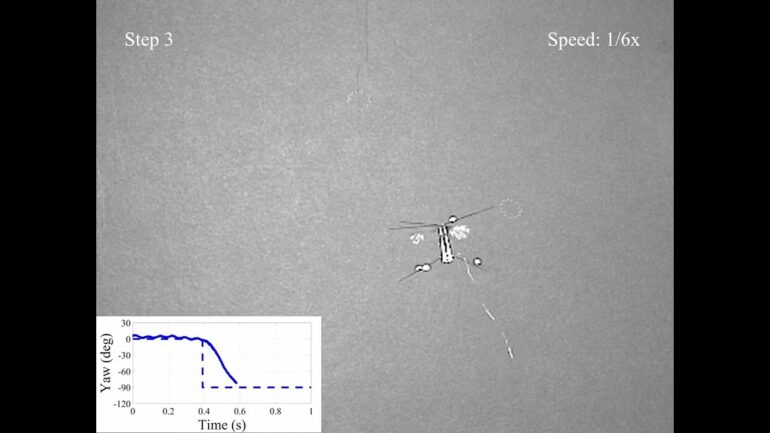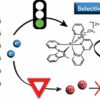A robotic bee that can fly fully in all directions has been developed by Washington State University researchers.
With four wings made out of carbon fiber and mylar as well as four light-weight actuators to control each wing, the Bee++ prototype is the first to fly stably in all directions. That includes the tricky twisting motion known as yaw, with the Bee++ fully achieving the six degrees of free movement that a typical flying insect displays.
Led by Néstor O. Pérez-Arancibia, Flaherty associate professor in WSU’s School of Mechanical and Materials Engineering, the researchers report on their work in the journal, IEEE Transactions on Robotics. Pérez-Arancibia will present the results at the IEEE International Conference on Robotics and Automation at the end of this month.
Researchers have been trying to develop artificial flying insects for more than 30 years, said Pérez-Arancibia. They could someday be used for many applications, including for artificial pollination, search and rescue efforts in tight spaces, biological research, or environmental monitoring, including in hostile environments.
But just getting the tiny robots to take off and land required development of controllers that act the way an insect brain does.
“It’s a mixture of robotic design and control,” he said. “Control is highly mathematical, and you design a sort of artificial brain. Some people call it the hidden technology, but without those simple brains, nothing would work.”
Researchers initially developed a two-winged robotic bee, but it was limited in its movement. In 2019, Pérez-Arancibia and two of his Ph.D. students for the first time built a four-winged robot light enough to take off. To do two maneuvers known as pitching or rolling, the researchers make the front wings flap in a different way than the back wings for pitching and the right wings flap in a different way than the left wings for rolling, creating torque that rotates the robot about its two main horizontal axes.
But being able to control the complex yaw motion is tremendously important, he said. Without it, robots spin out of control, unable to focus on a point. Then they crash.
“If you can’t control yaw, you’re super limited,” he said. “If you’re a bee, here is the flower, but if you can’t control the yaw, you are spinning all the time as you try to get there.”
Having all degrees of movement is also critically important for evasive maneuvers or tracking objects.
“The system is highly unstable, and the problem is super hard,” he said. “For many years, people had theoretical ideas about how to control yaw, but nobody could achieve it due to actuation limitations.”
To allow their robot to twist in a controlled manner, the researchers took a cue from insects and moved the wings so that they flap in an angled plane. They also increased the amount of times per second their robot can flap its wings—from 100 to 160 times per second.
“Part of the solution was the physical design of the robot, and we also invented a new design for the controller—the brain that tells the robot what to do,” he said.
Weighing in at 95 mg with a 33-millimeter wingspan, the Bee++ is still bigger than real bees, which weigh around 10 milligrams. Unlike real insects, it can only fly autonomously for about five minutes at a time, so it is mostly tethered to a power source through a cable. The researchers are also working to develop other types of insect robots, including crawlers and water striders.
More information:
Ryan M. Bena et al, High-Performance Six-DOF Flight Control of the Bee++: An Inclined-Stroke-Plane Approach, IEEE Transactions on Robotics (2023). DOI: 10.1109/TRO.2022.3218260
Provided by
Washington State University
Citation:
Researchers build bee robot that can twist (2023, May 23)



